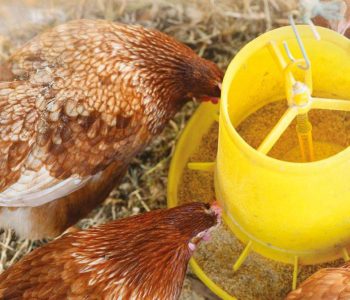It is evident that this situation has advantages and disadvantages, from the EU regulatory framework to the quality and presentation of the feed for our birds.
| From my point of view as a specialist in manufacturing technology, I will try to break down the limitations we face in this time of volatile input prices. |
- We all know that animal feed factories can be divided into several categories, and these will limit the final product we want to achieve. First, we have single-species factories and multi-species factories; this distinction, although minor, will be the first significant limitation to address.
- Next, we will distinguish between pre-grinding and post-grinding factories, where we will examine the advantages and disadvantages of each when aiming to obtain an appropriate final product.
- Third, we will examine the type of product obtained with a roller mill and how we can adjust a hammer mill to minimize the impact of “fines” in the mix. And of course, whether we pelletize or present the feed as a mash, we will review all the machinery in our facilities that may pose limitations affecting the productive quality of the animals. Finally, we will look at our energy costs and explore alternatives to minimize their impact.
Single-species factories
It is common to have crumbs for the rearing phase from 0 to 8 weeks, and mash until 16 weeks, with pre-laying in mash and mash throughout the production phase.
Pre-grinding factories and post-grinding factories
As we mentioned earlier, in the types of factories, we have pre-grinding and post-grinding. Here, the first significant limitation appears, which will accompany us until the end of the presentation.
|
Pre-grinding Post-grinding |
Up to this point, we have been discussing the configuration of hammer mills, which inherently produce more fines than a roller mill. If our goal is to produce a good mash and we have a single-species factory, it would be best to have a roller mill, as it will systematically reduce fines, and additionally, the consumption per ton produced is much lower compared to a hammer mill.
|
At this point, I would like to emphasize issues that affect all factories in common, which is the quality of what enters through the intake and what we can do to improve the quality of these ingredients. |
¡Attention, the word “Quality” is mentioned!! How do we define it?
The processes required to achieve this goal consist of measurable requirements fulfilled by both people and machines.
El trabajo de la dirección es seleccionar estos requerimientos, disponer que cada uno entienda su papel personal en cumplirlos, y entonces hacer que los requerimientos se cumplan de entrada.
|
Once we know the established requirements, we can take action. How?
In the post-grinding factory, what does technology offer to help us? This is where the Mill Variator comes into play, which allows us to adjust the rpm of the mill and the sieve hole to achieve the minimum required fines without exceeding a high percentage of coarse particles. It’s important to note that all the feed will pass through here, and it’s equally harmful to have:
These parameters apply for a mash presentation. If we need to granulate, the parameters will be:
|
| From these requirements, we must adapt our facilities to get as close as possible to the objective and keep in mind that our customer is the animal, not the farmer! |
Considering that our customers are hens, defined as granivorous birds, I believe it’s time to evaluate how we will feed them, based on flour as the food presentation and taking into account genetic advancements.
There is plenty of literature encouraging us to feed with flour, but to conclude, I will write a phrase that is a maxim in our industry: “better a good pellet than a bad meal.” And here, gentlemen, is where we, the technicians, come in to achieve the best result at the lowest possible cost.
